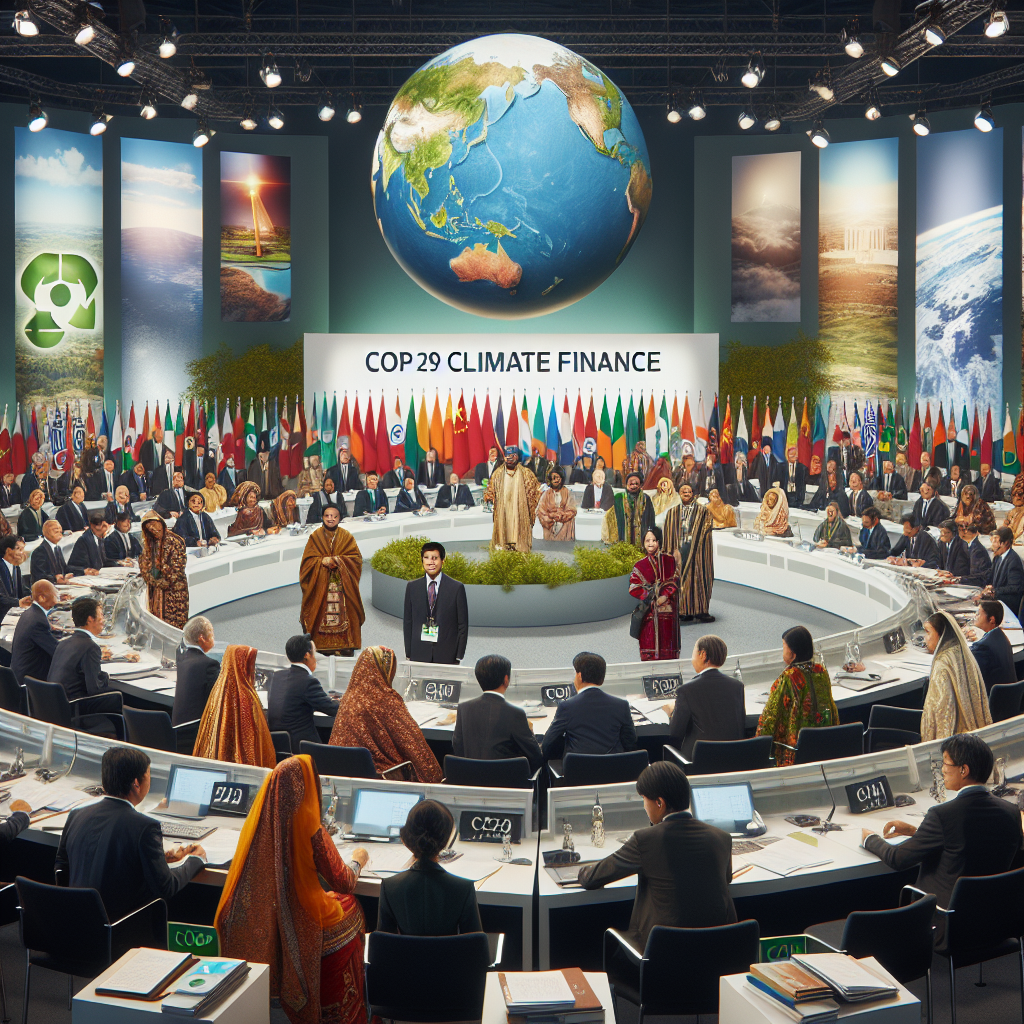
COP29’s New Climate Finance Deal: Will India and China Step Up?
India and China, being the world’s two most populous countries, are at the forefront of global climate efforts. With more than a third of the global population under their jurisdiction and significant global emissions contributions, their roles in achieving, or potentially hindering, global climate goals are crucial.
Understanding COP29’s Climate Agenda
The 29th Conference of the Parties (COP29) held in Azerbaijan marked a significant milestone in global climate discussions. Dubbed the “climate finance COP,” the conference concluded with countries showing a united front to establish new, ambitious climate finance targets. This is exemplified by the founding of the New Collective Quantified Goal (NCQG), intended to replace the US$100 billion goal by pledging US$300 billion annually for developing countries by 2035.
Challenges with the NCQG
Despite the ambitious promise of the NCQG, the set target falls short of the advocated US$1.3 trillion mark considered necessary to fully meet the climate financing needs of developing countries. Key questions remain:
- Who will shoulder the financial burden?
- Will the funds be in the form of grants or loans?
- How will these resources be allocated and distributed efficiently?
Addressing these uncertainties is imperative for the NCQG to realize its full potential.
Implications for India
For India, as a significant emerging economy, the challenge lies in balancing climate goals with economic growth and poverty alleviation. At COP29, India underscored the urgent need for increased climate finance to transition to a low-carbon economy. New Delhi has called for developed nations—those responsible for major historical emissions—to shoulder a larger financial load.
Despite achieving notable progress in renewable energy, such as setting a target of 500 GW of non-fossil fuel-based energy by 2030, India still struggles with scaling these initiatives without robust financial and technological support. The commitment to mobilizing US$300 billion annually offers hope but is insufficient to meet India’s high ambitions for financial aid.
Importantly, India advocates for climate finance that doesn’t come with restrictive conditions that may hamper economic growth. For New Delhi, the key issue is ensuring that financial assistance is equitable and transparent, aligning climate commitments with development objectives.
China’s Role in Climate Finance
At COP29, China faced scrutiny regarding its contributions to climate finance. As the world’s largest greenhouse gas emitter, its role in global climate efforts is closely watched, with increasing calls for China to increase its financial pledge.
The Paris Agreement of 2015 places the climate finance responsibility largely on developed nations, but the increased global pressure has prompted calls for China to take on a more significant role. Although China considers itself a developing country, its growing industrial capacity and global influence demand more responsibility in addressing climate change.
China’s Financial Commitments
Since 2016, China has pledged over US$24.5 billion in climate finance to developing nations, with an annual contribution estimated to be around US$4 billion. While these figures are noteworthy, they represent only a fragment of the contributions expected from developed nations under the US$100 billion target.
A significant portion of China’s contributions come as loans rather than grants, raising concerns about debt sustainability for recipient countries. As China’s geopolitical and economic power expands, it faces increasing pressure to offer more transparent and robust climate finance commitments.
The Way Forward
COP29 highlighted the crucial roles of India and China in global climate finance. Both nations must demonstrate commitment and leadership, drawing up policies that align with international expectations while ensuring domestic growth.
The pressure on India and China to lead by example is paramount as their actions may well define the future trajectory of climate diplomacy and global sustainability.
By enhancing their climate finance commitments, India and China can not only uphold their global standing but also significantly contribute to a sustainable future. Their actions at COP29 set a precedent for their ongoing involvement in shaping international climate policies.
Source: https://asiatimes.com/2024/12/cop29s-new-climate-finance-deal-will-india-and-china-step-up/


Thank you for your sharing. I am worried that I lack creative ideas. It is your article that makes me full of hope. Thank you. But, I have a question, can you help me?
Thank you for your sharing. I am worried that I lack creative ideas. It is your article that makes me full of hope. Thank you. But, I have a question, can you help me?
Thanks for sharing. I read many of your blog posts, cool, your blog is very good.